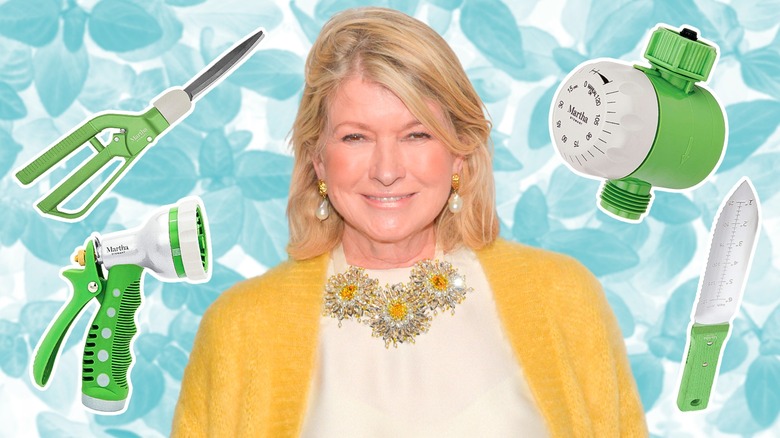6 Best Martha Stewart Gardening Tools, Ranked From Worst To Best

The Best and Worst Martha Stewart Garden Tools According to Real Users
Martha Stewart has built a legacy around everything related to the home, from cooking and decorating to gardening. Her brand is synonymous with quality, and her garden tools are no exception. However, not all of her products have received the same level of praise. Based on real user feedback, here’s a breakdown of which Martha Stewart garden tools are worth your time and which ones might be best avoided.
6. Rotatable Grass Lawn Shears
These shears are designed to make detailed trimming easier by allowing the blades to pivot. While the concept sounds useful, many users have found them lacking. Some say that the 5-inch blades are too small and flimsy, making them difficult to use for even basic tasks. Others report that the shears break easily or don’t cut effectively. A few users with hand conditions like arthritis also found them challenging to handle. While some positive reviews exist, the majority suggest that these shears may not be the best investment for serious gardeners.
5. High Flow Mechanical Water Timer
Watering your garden properly is essential, and a reliable timer can help manage this task more efficiently. Martha Stewart’s water timer is praised for being leak-proof, easy to use, and capable of handling multiple faucets. Many users appreciate its mechanical design, which doesn’t require batteries. However, some customers have reported issues with leaks, broken timers, and inconsistent water flow. Customer service experiences have also been mixed, with some expressing frustration when trying to return the product.
4. Waxed Canvas Garden Tool Bag
This durable bag is ideal for carrying garden tools and is designed to hold up to 50 pounds. It features multiple pockets and is praised for its versatility. Many users love the sturdiness and the fact that it can also be used for carrying firewood or other items. However, some complaints include insufficient pockets, stiff material, and poor stitching. While most reviews are positive, individual preferences may affect how well this bag suits your needs.
3. Four-Piece Trowel And Cultivator Planting Set
This set includes a standard trowel, a slender trowel for transplanting, and two cultivators for soil preparation. Customers praise the set for being sturdy, well-made, and easy to use. The wooden handles are also highlighted as a nice touch. Some users feel the price could be higher given the quality, but overall, the set is seen as a great value and a solid choice for any gardener.
2. Pruner And Garden Scissor Snip Set
Pruning is an essential part of gardening, and having the right tools makes a big difference. Martha Stewart’s pruner and scissor set is lauded for its sharp blades, comfortable grip, and versatility. Many users appreciate the affordability and the fact that the tools work well on both delicate and thick branches. A few users noted that the blades were too tight for their liking, but this is a rare complaint. Overall, the set is considered a top choice for pruning tasks.
1. Japanese Stainless Hori Knife
The hori hori knife is a must-have for any serious gardener. Martha Stewart’s version is praised for its durability, strong handle, and ability to cut through tough roots. The measurements etched into the blade make it easy to plant seeds at the correct depth. Most reviews are overwhelmingly positive, with many users saying they would buy multiple copies for friends and family. The only minor downside is that it may be challenging for left-handed users, though flipping the knife over seems to resolve the issue.
Methodology
To determine the rankings, we analyzed customer reviews focusing on factors such as durability, ease of use, and long-term satisfaction. Products with numerous five-star reviews and positive feedback on quality and functionality were ranked higher. Conversely, those with frequent complaints about breakage or difficulty in use were placed lower on the list. Gardening is a personal endeavor, so the best tool for one person may not be the best for another. However, based on user experiences, these are the Martha Stewart garden tools that stand out the most.
